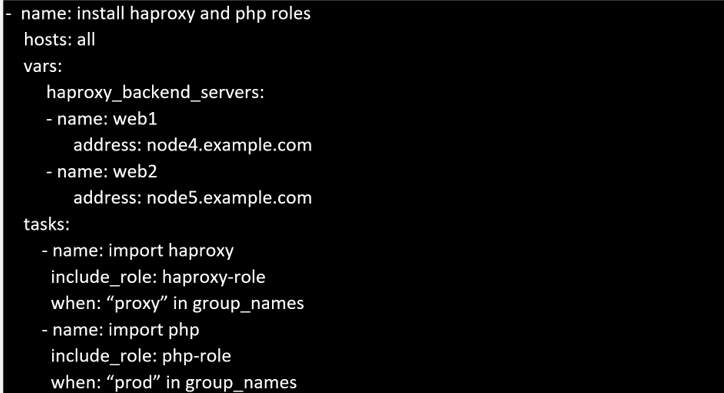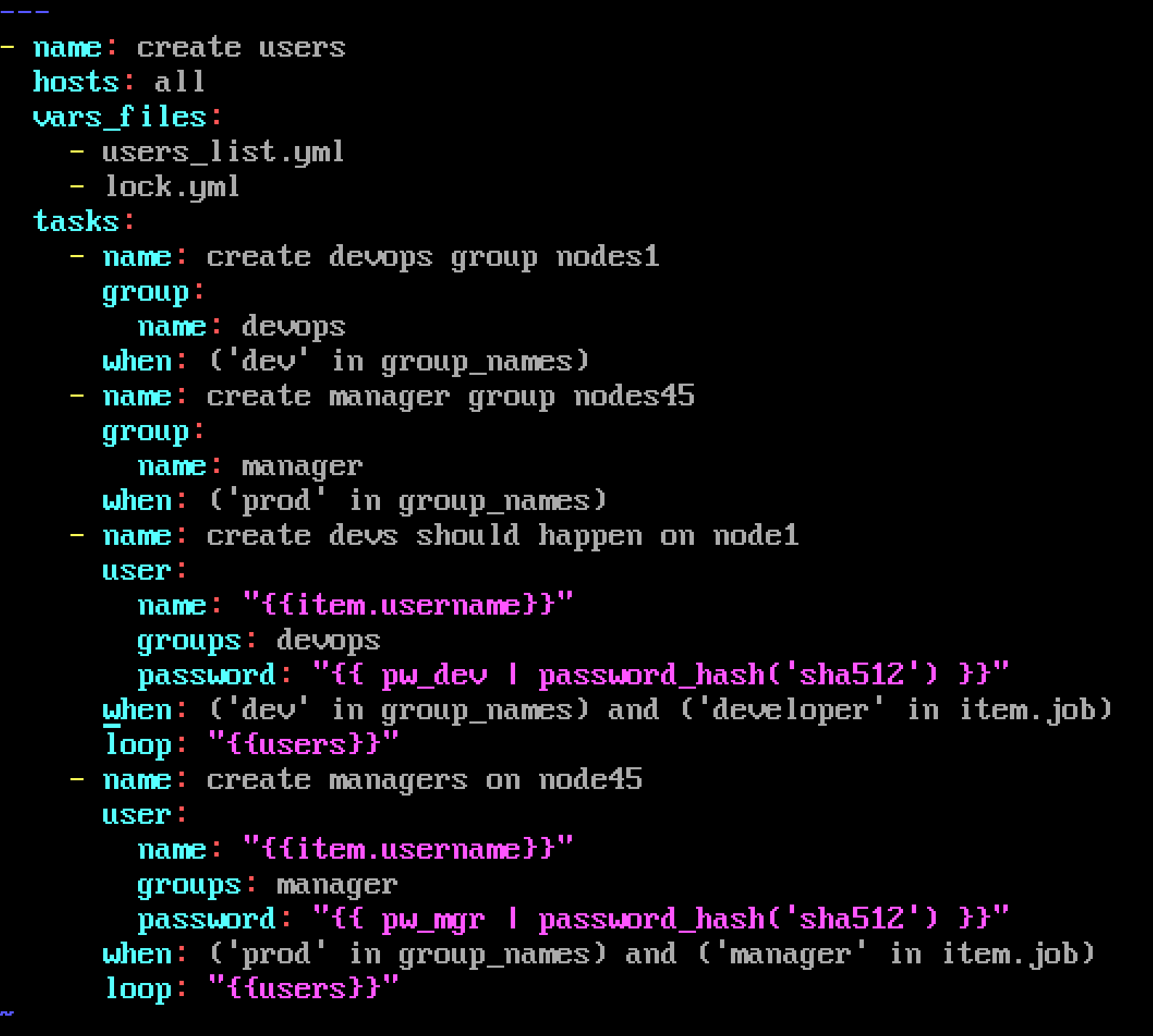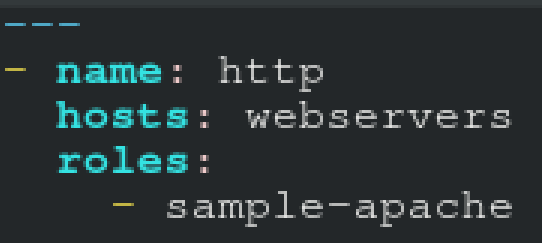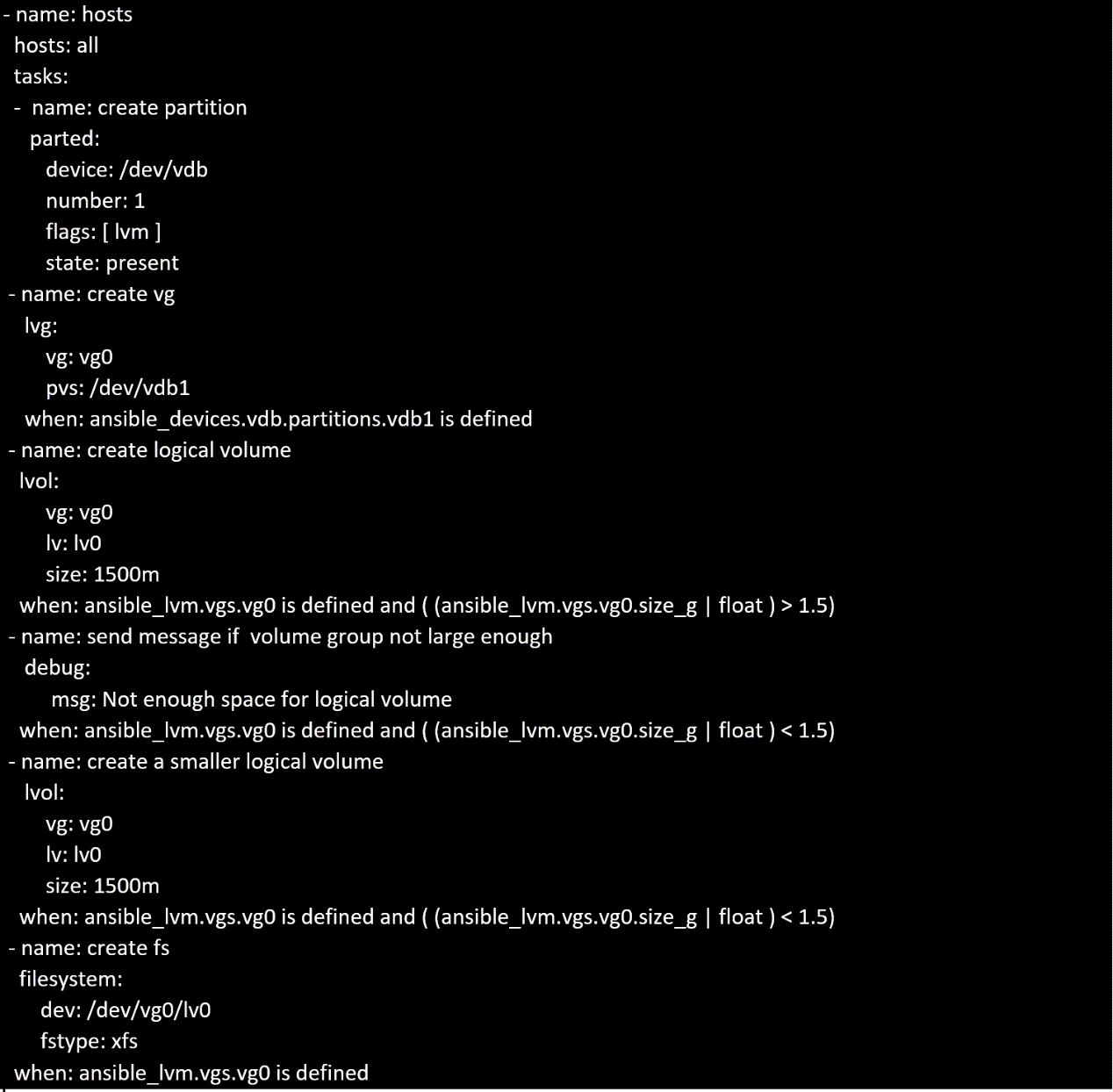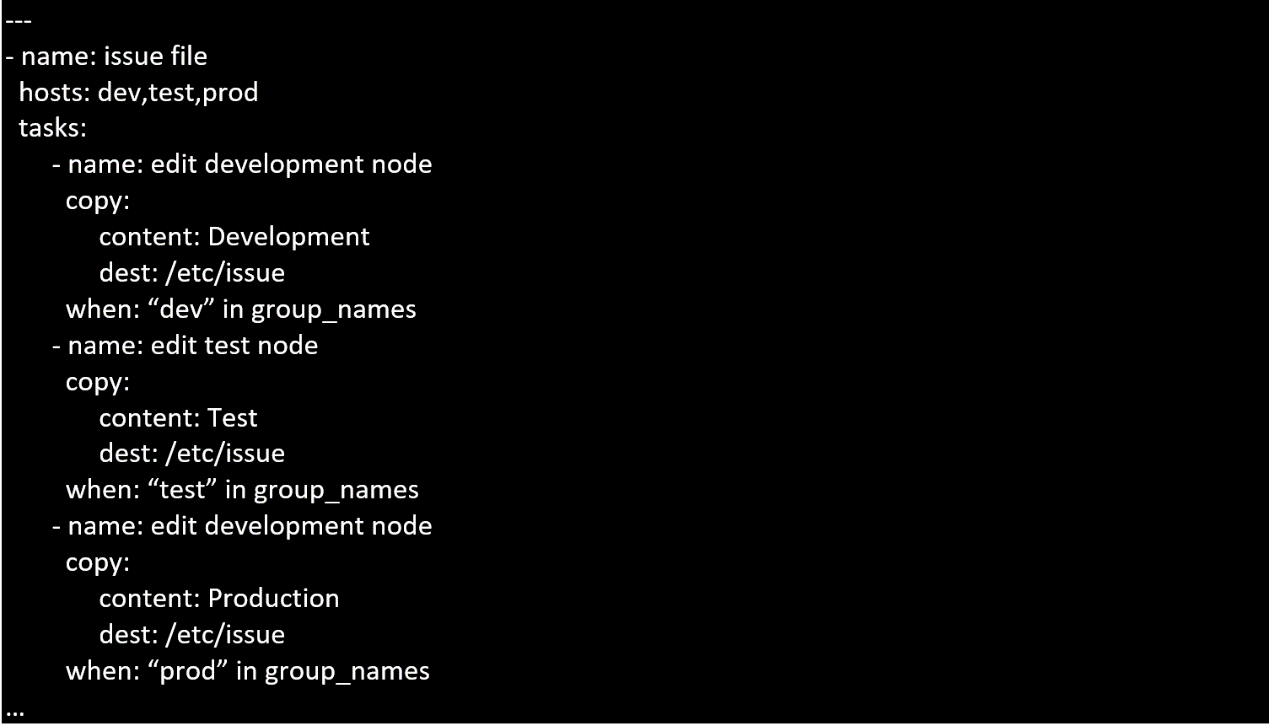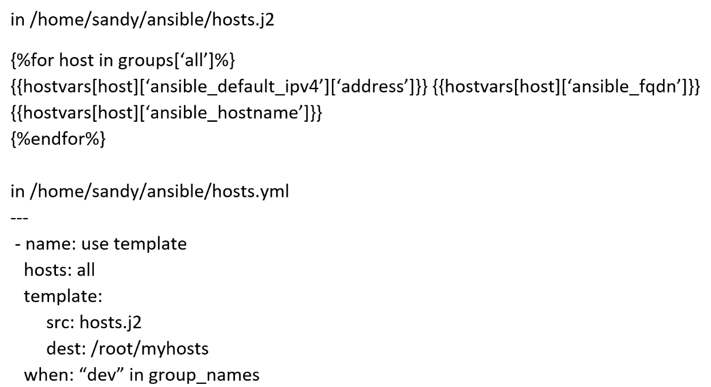RedHat EX447 - Red Hat Certified Specialist in Advanced Automation: Ansible Best Practices
Create a file calledrequirements.ymlin/home/sandy/ansible/rolesa file calledrole.yml in /home/sandy/ansible/.Thehaproxy-roleshould be used on theproxyhost. And when you curlhttp://node3.example.com it should display "Welcome tonode4.example.com" and when you curl again "Welcome tonode5.example.com" Thephp-roleshould be used on theprodhost.
Create the users in the fileusersjist.ymlfile provided. Do this in a playbook called users.yml located at/home/sandy/ansible.The passwords for these users should be set using thelock.ymlfile from TASK7. When running the playbook, the lock.yml file should be unlocked withsecret.txtfile from TASK 7.
All users with the job of 'developer' should be created on thedevhosts, add them to the group devops, their password should be set using thepw_devvariable. Likewise create users with the job of 'manager' on theproxyhost and add the users to the group 'managers', their password should be set using thepw_mgrvariable.
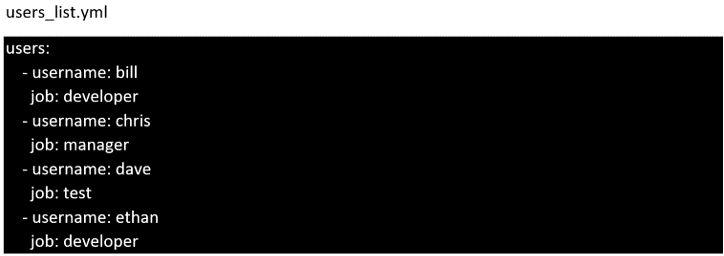
Create a playbook /home/bob /ansible/motd.yml that runs on all inventory hosts and docs the following: The playbook should replaee any existing content of/etc/motd in the following text. Use ansible facts to display the FQDN of each host
On hosts in the dev host group the line should be "Welcome to Dev Server FQDN".
On hosts in the webserver host group the line should be "Welcome to Apache Server FQDN".
On hosts in the database host group the line should be "Welcome to MySQL Server FQDN".
In /home/sandy/ansible/create a playbook calledlogvol.yml. Inthe play create a logical volume calledIv0and make it of size 1500MiB on volume groupvgOIf there is not enough space in the volume groupprinta message"Not enough space for logical volume"and then make a 800MiBIv0instead. If the volume group still doesn't exist, create a message"Volume group doesn't exist"Create anxfsfilesystem on allIv0logical volumes. Don't mount the logical volume.
Create a playbook called issue.yml in /home/sandy/ansible which changes the file /etc/issue on all managed nodes: If host is a member of (lev then write "Development" If host is a member oftestthen write "Test" If host is a member ofprodthen write "Production"
Create a jinja template in /home/sandy/ansible/ and name it hosts.j2. Edit this file so it looks like the one below. The order of the nodes doesn't matter. Then create a playbook in/home/sandy/ansiblecalledhosts.ymland install the template on dev node at/root/myhosts
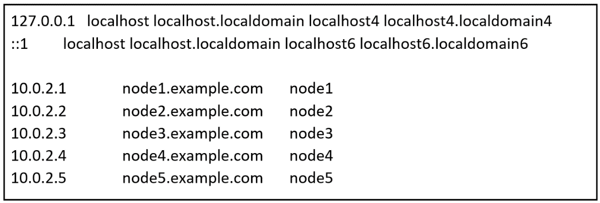
Install and configure ansible
User sandy has been created on your control node with the appropriate permissions already, do not change or modify ssh keys. Install the necessary packages to run ansible on the control node. Configure ansible.cfg to be in folder /home/sandy/ansible/ansible.cfg and configure to access remote machines via the sandy user. All roles should be in the path /home/sandy/ansible/roles. The inventory path should be in /home/sandy/ansible/invenlory.
You will have access to 5 nodes.
node1.example.com
node2.example.com
node3.example.com
node4.example.com
node5.example.com
Configure these nodes to be in an inventory file where node I is a member of group dev. nodc2 is a member of group test, node3 is a member of group proxy, nodc4 and node 5 are members of group prod. Also, prod is a member of group webservers.



